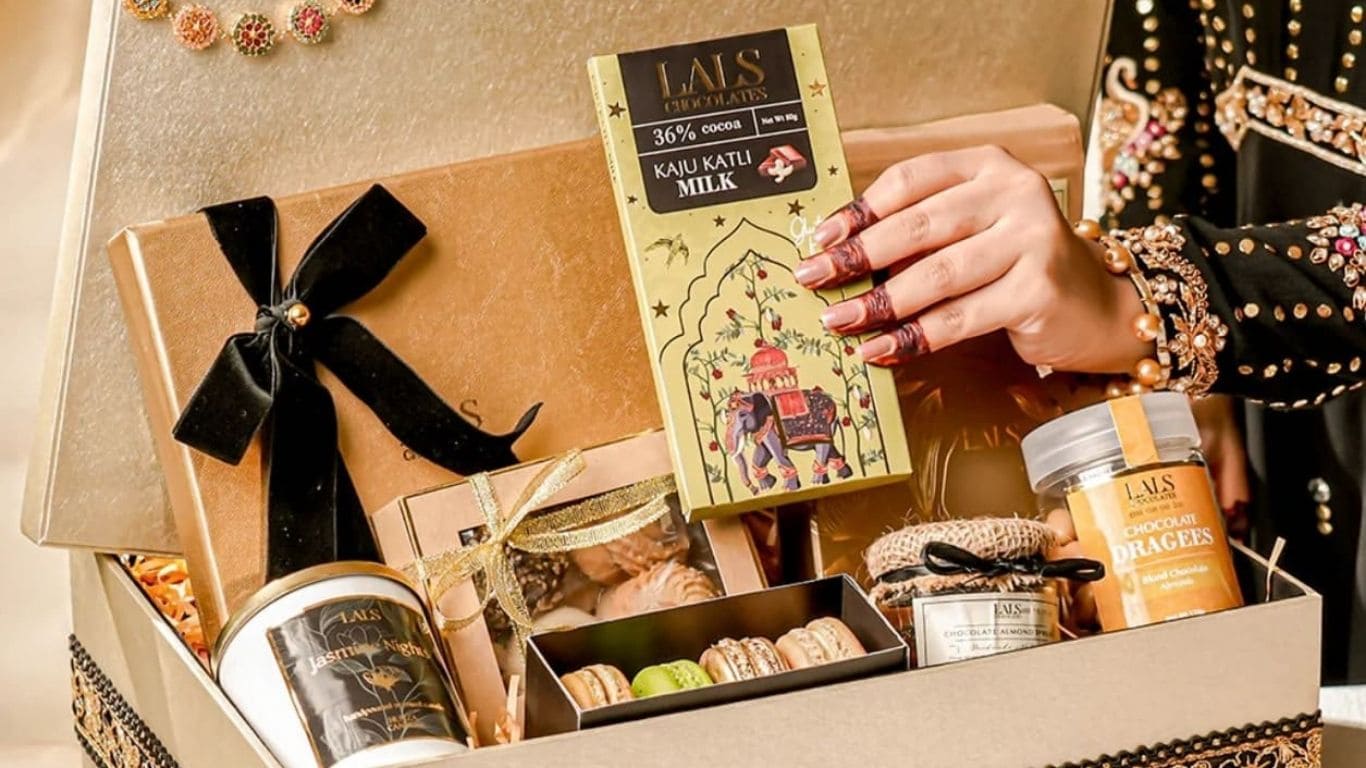Want a general look at what the groom, bride, and guests wear for weddings in Tanzania? Here’s an overview of traditional Tanzanian wedding outfits.
Tanzania is an East African country with diverse ethnic groups. The country is made up of over 120 ethnic groups, and marriages are celebrated in unique ways among them.
In the tapestry of human culture, weddings stand as vibrant threads, weaving together traditions, customs, and celebrations. They are not just ceremonies; they are pivotal moments where cultures shine brightest, showcasing their uniqueness and resilience.
Nowhere is this more evident than in Tanzania, where weddings serve as grand showcases of tradition, particularly through the exquisite attire worn by couples and guests alike. Thousands of marriages are held every year in Tanzania by Tanzanian couples and foreign nationals, and if there’s one thing that stands out in all of them, it’s definitely the way the people dress in their beautiful varieties of clothing or fabrics.
From the Maasai in the north to the Zaramo in the south, each ethnic group contributes to the kaleidoscope of colors, patterns, and styles that make up Tanzanian traditional clothing.
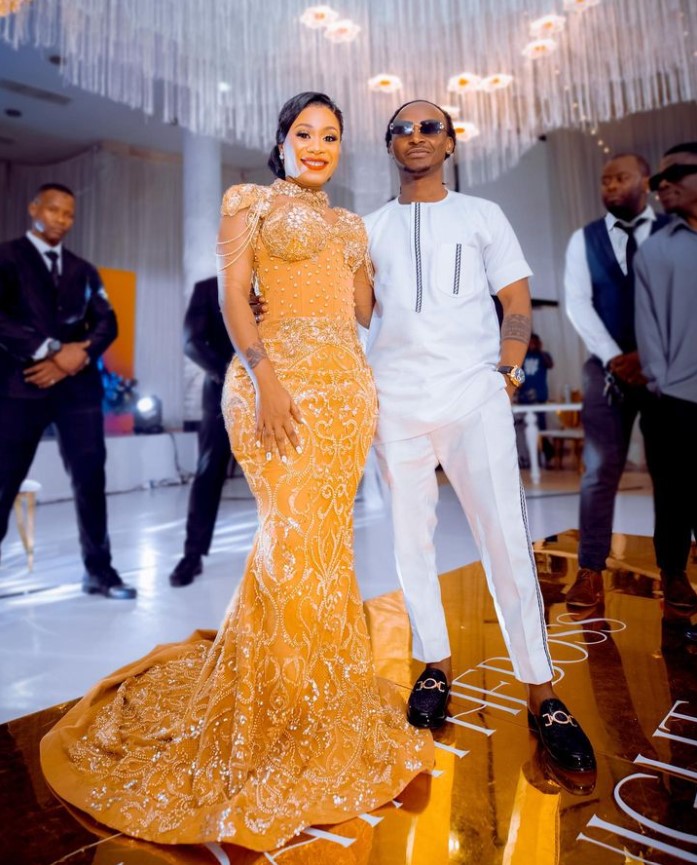
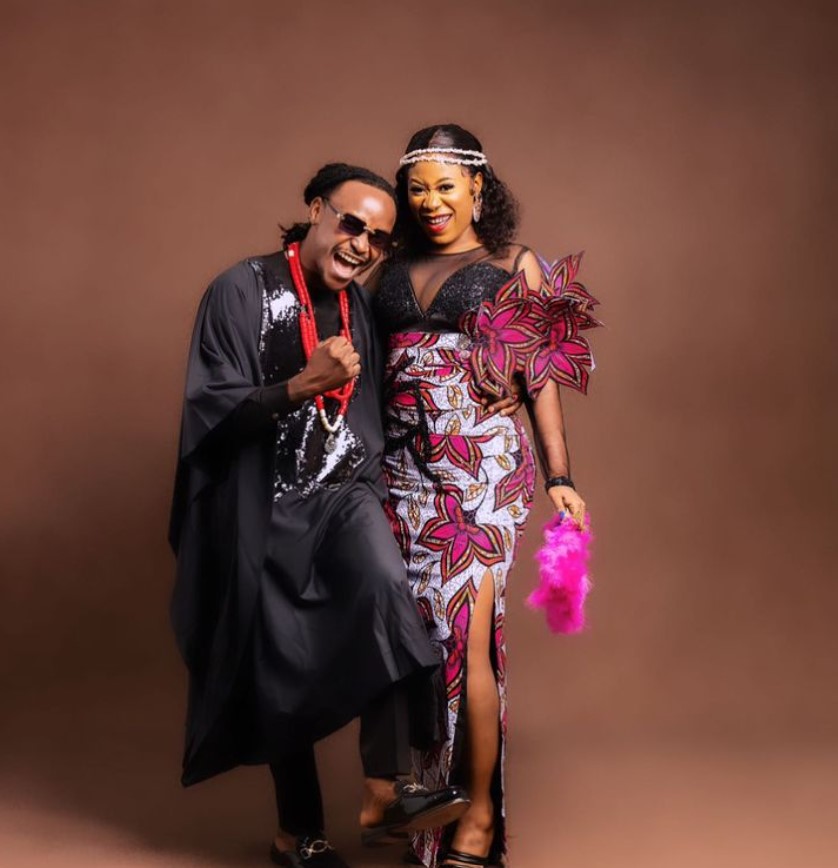
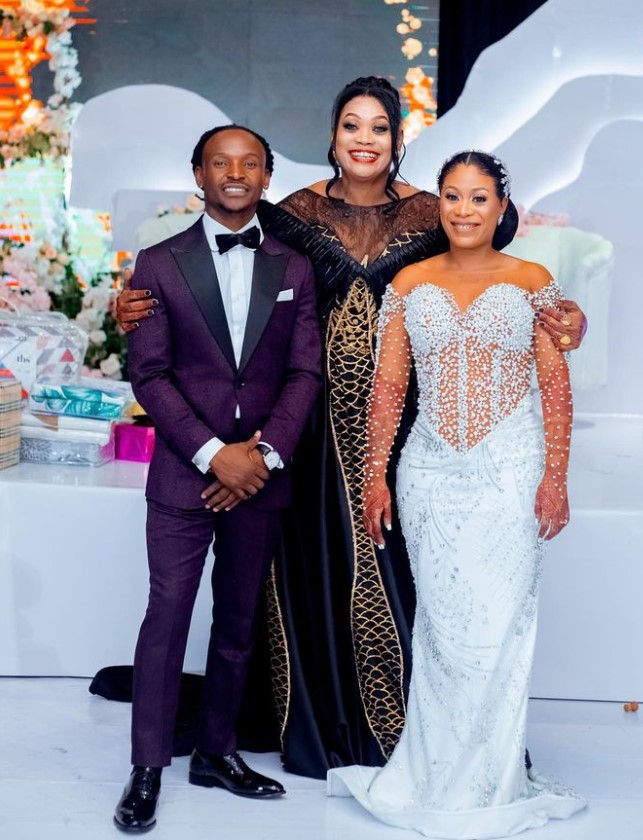
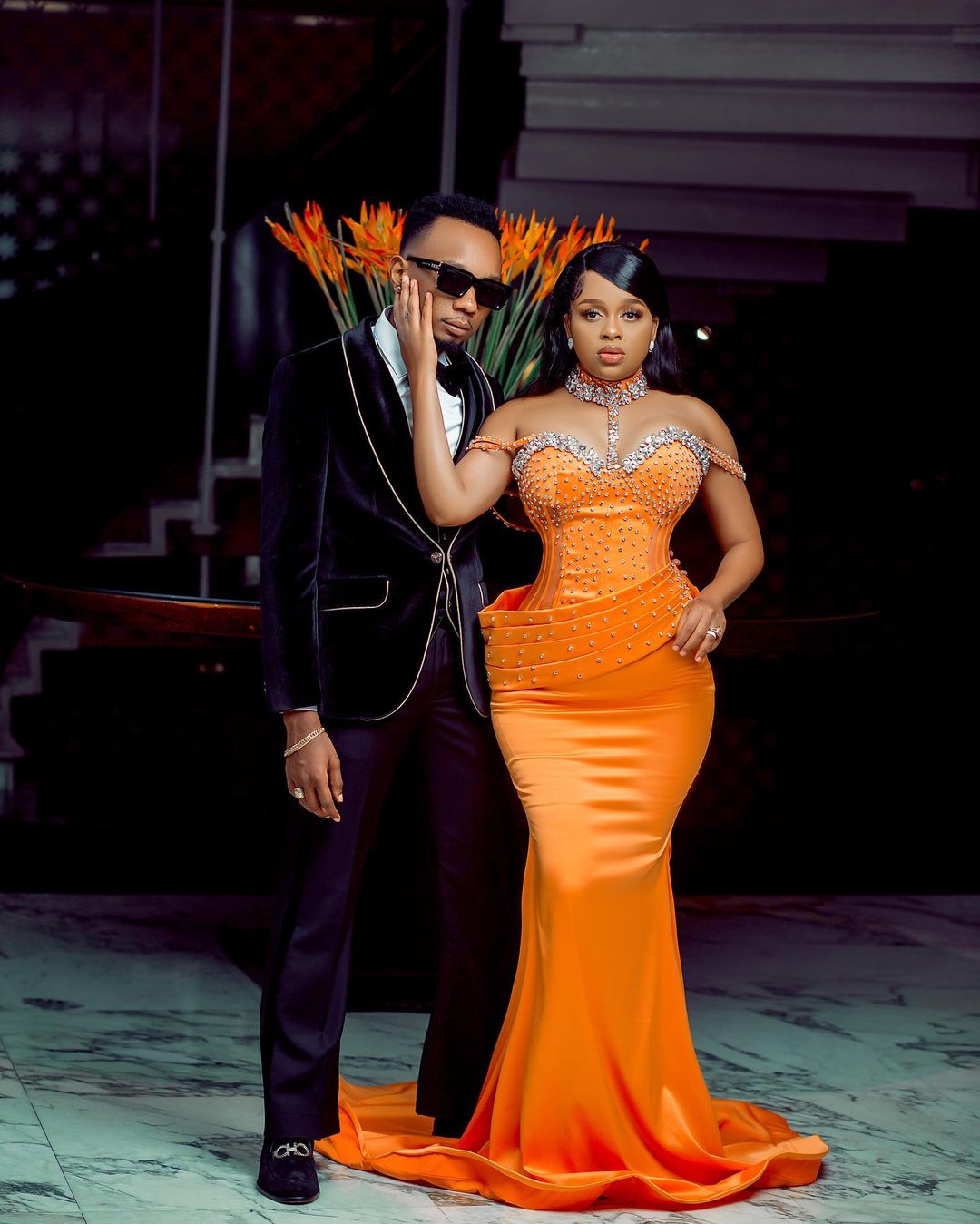
The Significance of Tanzanian Clothing to Traditions and Wedding Ceremonies
Tanzanian weddings are steeped in cultural significance, serving as occasions for families to come together, reaffirm bonds, and celebrate shared heritage. These ceremonies are not merely about the union of two individuals but also about the fusion of families and communities.
At the heart of these festivities lies tradition, a rich tapestry woven over generations, encompassing diverse ethnic groups such as the Sukuma, Chagga, Maasai, and many others.
The wedding attire in Tanzania reflects this rich tapestry, serving as a visual representation of cultural identity, values, and beliefs. The way Tanzanians dress shows how rich they are in culture and tradition.
The traditional outfits of these people are quite different because of the numerous layers of fabric wrapped around them.
Each garment, adorned with intricate patterns and symbolic motifs, tells a story of heritage and lineage, preserving the essence of Tanzanian identity in a rapidly evolving world.
They add jewelry to suit their clothes and designs. The attire can be seen as over-colored or overdressed by visitors. The country is characterized by over a hundred different ethnicities, and these ethnic groups have their own unique fashion sense.
In a society where modernity often intersects with tradition, weddings offer a sanctuary where the past is honored, cherished, and celebrated.
Each tribe has its own folk garments, decorations, and style. However, you may find it difficult to pinpoint where attire comes from in the country.
In this exploration, JanaTribe will delve into the kaleidoscope of colors, textures, and symbolism that adorn the bride, groom, and attendees in a typical traditional Tanzanian wedding.
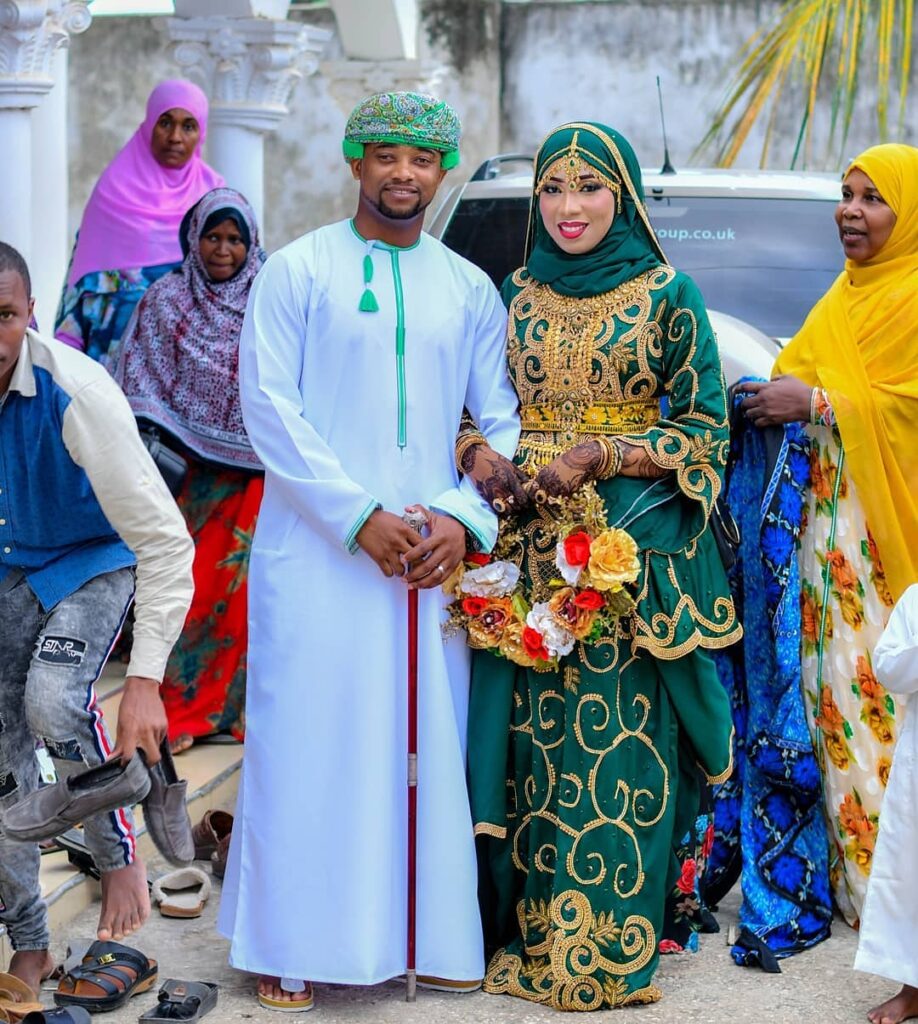
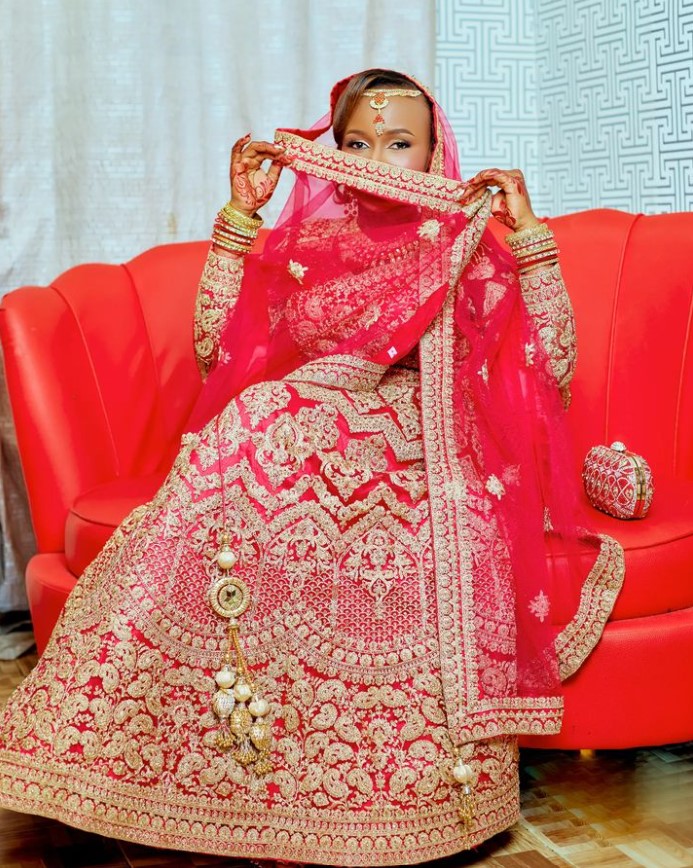
Traditional Wedding Fashion Styles in Tanzania for Women (Brides or Females)
For the bride, the wedding day is a culmination of dreams, aspirations, and cultural heritage. Her attire is a testament to this, embodying the essence of femininity, grace, and beauty. In traditional Tanzanian weddings, brides often don garments that reflect the cultural aesthetics of their respective ethnic groups.
The women of Tanzania wear what we call the Kanga for their traditional weddings. The Kanga is a rectangular cotton cloth. This cloth measures about 1.5m in width and 1m in length.
This outfit is used by many women to make statements. Since many of them are not allowed to be bold in public, they express themselves when they rock this traditional clothing.
Some Tanzanian females turn to wearing kangas with sharp sayings printed on them. To them, these garments are their voice. Usually, the printed patterns on the borders of the cloth are different from the ones at the center of the cloth.
There is another garment used in Tanzania, similar to Kanga. It is called “kitenge., This piece is worn in West, East, and Central Africa. Kitenge is also a rectangular cloth, but the fabric is thicker than Kanga. This piece is worn and used in the household similarly to the Kanga.
Simple traditional dresses for Christians can be sewn from Kanga or Kitenge fabrics. For Muslims, you can incorporate maasai beadwork (like beaded jewelry, such as necklaces, earrings, and bracelets) into bridal attire, Maish Ahuru suggests. These accessories not only enhance the bride’s beauty but also symbolize cultural identity and the union of families. The vibrant colors of the Maasai beadwork create a stunning contrast against the bride’s attire. Brides elegantly drape Kanga veils over their heads, showcasing messages of love and wisdom embedded in the fabric. The veils serve as symbolic elements, adding a touch of tradition to the bridal look while embracing the cultural significance of Kanga.
At white weddings, modern inspirations have given rise to contemporary wedding gown styles in recent years that elegantly combine tradition and cutting-edge flair.

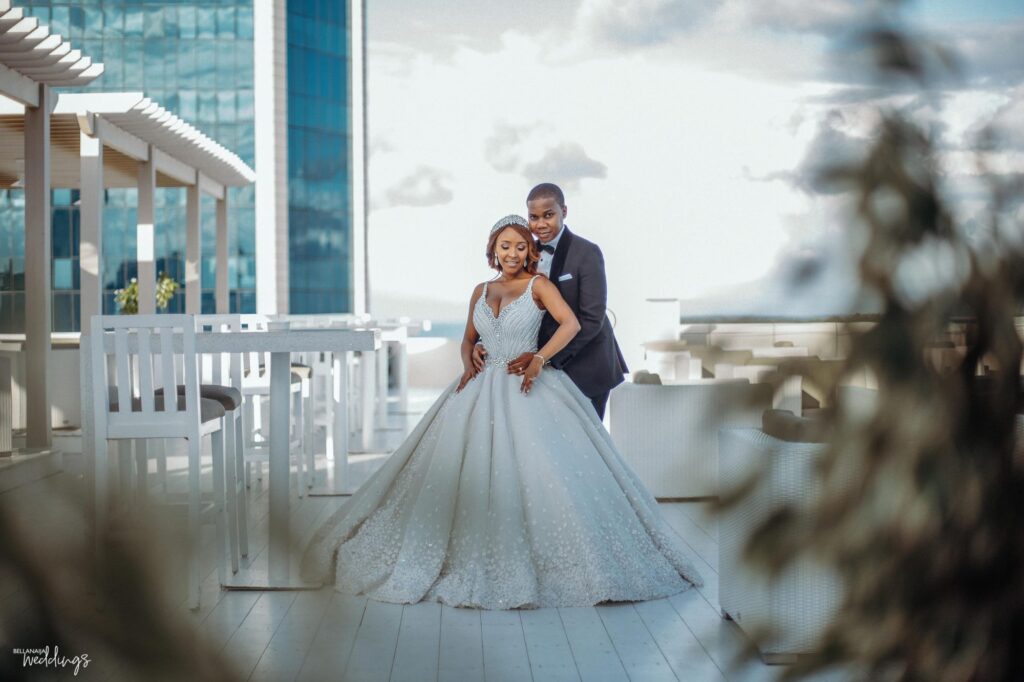
Brides wedding attire for both traditional and white/church weddings includes:
- Different styles and colors of neatly and fittably sewn clothes from Kitenge or Kanga garments that feature flowing silhouettes
- Complemented by matching headwraps
- For Muslims, incorporating Maasai beadwork (beaded jewelry, such as necklaces, earrings, and bracelets) into bridal attire is a cherished tradition in Tanzania.
- Lastly, Muslims are not to forget their elegantly draped Kanga veils over their heads.
Tanzanian fashion designers play a pivotal role in shaping bridal trends by seamlessly merging tradition with modernity. Renowned designers in Tanzania draw inspiration from the nation’s rich cultural heritage, infusing their creations with a contemporary edge. Through bridal collections, these designers contribute to the evolving landscape of Tanzanian bridal fashion.
The bride’s clothing tells a story visually by signifying her ancestry, her family, and the start of a new chapter.
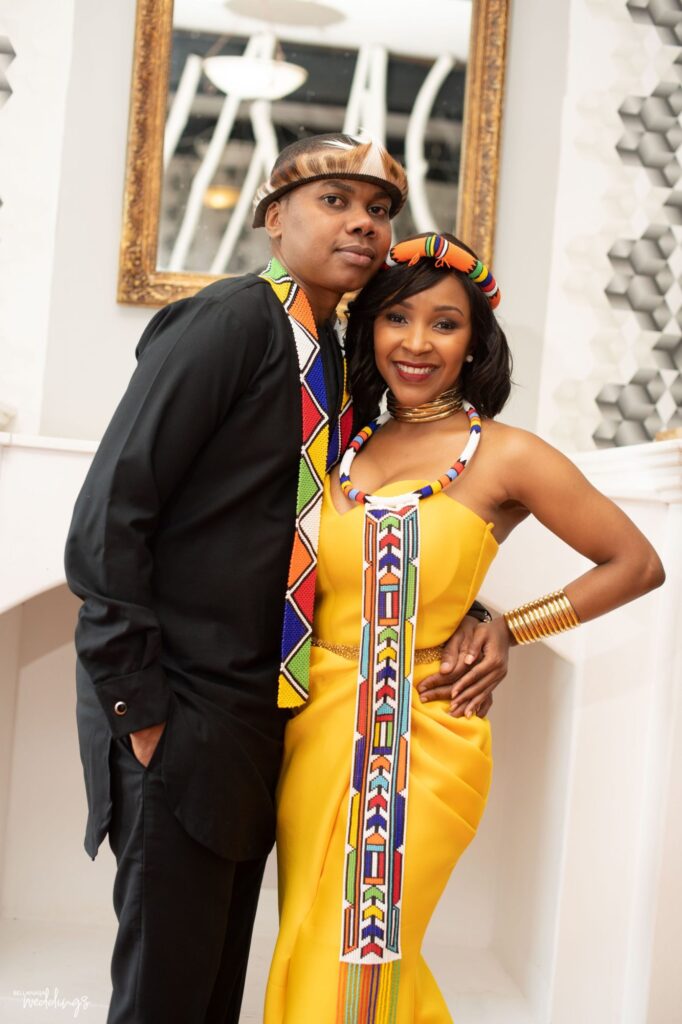
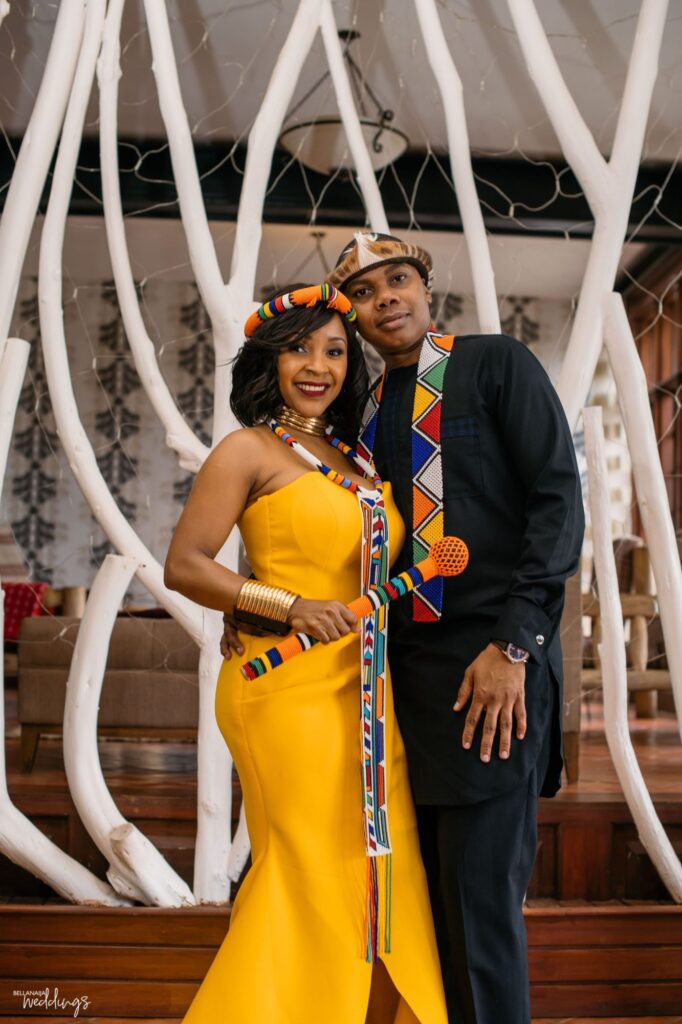
Traditional Wedding Attire in Tanzania for Males (grooms or Men)
While the bride’s attire exudes grace and femininity, the groom’s ensemble exudes regal elegance and cultural pride. In Tanzanian weddings, grooms often don attire that symbolizes masculinity, strength, and status, reflecting the values ingrained in their cultural heritage.
The typical traditional male attire for men is called the Kanzu. The kanzu is an ankle- or floor-length garment. It serves as the national costume of Tanzania as well as the Comoros, where it is called/pronounced ‘Kandu’ as well as thawb. The beige or white-colored robe is also worn in some coastal Muslim regions of Tanzania and Kenya.
Although the Tanzanian kanzu was borrowed from Arab culture, it is worn by all religious faiths, including Christians, Muslims, African Jews, and members of African traditional religions.
In the past, the Kanzu was originally made from silk. Today, synthetic fabrics like polyester are used. The Tanzanian Kanzu is unlike other robes used in several African Great Lakes regions, which is where Tanzania is situated, although they have similarities. The Kanzu features a tassel that hangs from the collar of the robe.
Kangas are very popular clothing in Tanzania and Kenya, too. However, similar types of printed cloth can also be found in nearby countries, including Mozambique and Madagascar, where men usually wear them instead.
So at a typical traditional wedding in Tanzania, it is now customary for the groom to wear a white kanzu and a kofia, DandD Clothing reports. Kofia is a brimless cylindrical cap with a flat crown, usually worn by men. Kofia is a Swahili word for hat. The cap can be worn with a chitenge shirt or dashiki. In both Tanzania and Kenya, the groom wears a black or white bish on the kanzu to bring out its beauty.
At white weddings in Tanzania, grooms opt for contemporary European-style suits with cultural accessories, oftentimes; made from kanzu.
Guests Outfits at Traditional Weddings in Tanzania: Colors and Styles
As witnesses to the union of two souls, guests play an integral role in Tanzanian weddings. Their attire adds to the vibrancy of the occasion, creating a kaleidoscope of colors and textures that celebrate the rich diversity of Tanzanian culture.
What do guests wear at weddings in Tanzania? For guests attending a Tanzanian traditional wedding, any formal attire is appropriate.
You can choose kanzu or boubou cloth in colors that represent good tidings for the couple, or you can just choose a brightly colored and ornately designed outfit that will fit right in with the theme. If you’re unsure, ask someone at the wedding party for their advice.
Women often showcase the beauty of traditional African prints, including Ankara and other indigenous fabrics, while men may don richly patterned Kente (a common cloth from Ghana) or opt for contemporary suits with cultural accessories.
Also, guests can opt for different styles and colors of saris. Sari fabric is traditionally silk; today, fabrics like crépe and Georgette are commonly used, with colors like gold, pink, orange, maroon, brown, and yellow as well. Types of wedding saris include Kanchipuram wedding sari, Banarasi wedding sari, Sambalpuri wedding sari, Assam silk, Gota sari, Resham sari, Zardosi sari, Aithani sari, Bandhani sari, and Neriyathum sari.
The significance lies in the collective celebration of diversity, as guests honor the couple and the cultural mosaic of Tanzania through their choice of attire. Wedding ceremonies become a canvas of colors, patterns, and styles that reflect the unity of diversity, creating a visually striking and harmonious atmosphere.
Top 10 popular clothing or fabrics in Tanzania
1. Maasai Shuka
The Maasai, one of Tanzania’s most iconic ethnic groups, are renowned for their distinctive attire, including the Maasai shuka. This colorful cloth, adorned with bold patterns and hues, is worn by both men and women. The shuka serves various purposes, from clothing to bedding, and each color carries specific cultural meanings.
2. Kanga and Kitenge
Kanga and Kitenge fabrics are widely embraced throughout Tanzania. Kanga, a rectangular piece of printed fabric, often features messages, proverbs, or vibrant designs. Kitenge, a more elaborate and colorful fabric, is used to create a variety of garments, including dresses, skirts, and suits. Both fabrics are celebrated for their versatility and cultural significance.
3. Kanzu
The Kanzu is a traditional robe worn by men, particularly in coastal regions and during special occasions. Typically ankle-length and white, the Kanzu is often paired with an embroidered cap called a Kofia. It is a symbol of elegance and is commonly worn during weddings, religious ceremonies, and formal events.
4. Kikoi
The kikoi, a rectangular piece of fabric with vibrant stripes and patterns, is commonly worn by men as a garment wrapped around the waist. It is versatile, serving as a casual piece of clothing, a beach wrap, or even a head covering. The Kikoi reflects the coastal influences in Tanzanian attire.
5. Leso
Leso is a brightly colored cloth, often featuring bold patterns and designs. It is worn by women in various styles, including as a headscarf or wrapped around the body. Leso carries cultural significance and is commonly worn during ceremonies, celebrations, and daily life.
6. Gomesi
The gomesi is a traditional dress worn by women, particularly among the Sukuma people. It is characterized by its loose fit, vibrant colors, and often elaborate embroidery. The gomesi is a symbol of cultural pride and is worn during special events and ceremonies.
7. Kilifi
The Kilifi is a traditional attire worn by the Chaga people. It consists of a beautifully decorated dress adorned with beads and embroidery. The Kilifi reflects the cultural identity of the Chaga and is worn during important ceremonies and celebrations.
8. Dashiki
Although originating from West Africa, the dashiki has found its place in Tanzanian fashion. It is a loose-fitting, brightly colored garment with intricate patterns that is often worn during celebrations and festivals as casual attire.
9. Zaramo Beadwork
The Zaramo people are known for their exquisite beadwork, which is incorporated into jewelry and accessories. Beaded necklaces, bracelets, and anklets are integral parts of traditional Zaramo attire, adding a touch of elegance and cultural significance.
10. Khanga and Kikoy
Khanga and Kikoy, similar to their Kitenge and Kanga counterparts, are popular traditional fabrics used to create a variety of garments. They showcase a wide array of colors and patterns, providing individuals with the opportunity to express their style while embracing Tanzanian cultural elements.
An overview of the types of marriages in Tanzania
Spouses (both Tanzanians and foreign nationals) may get married by conducting a civil, religious, or traditional marriage. All three main types of marriages in the country are legally binding, and couples do not have to perform civil marriages before becoming officially married. The major thing when it comes to the legality of marriage in Tanzania is for such marriages to be lawfully registered in the country.
Tanzania’s laws guiding marriages are straightforward, and the legal age to get married in the country is 18 years. Couples below this age must obtain parental and guardian consent before proceeding with marriage. Although child marriages are illegal, they are quite common in Tanzania, and the number of underage marriages in the country has only recently begun to decline.
Tanzania is one of the few countries in the world where a person is permitted to have multiple spouses. This means the nation supports polygamous marriages, especially in traditional or customary marriages and in Islamic marriages. Christians, on the other hand, do not agree with that, as they support the monogamous system of marriage.
Christians and Muslims largely dominate the country. People of the Christian faith are the most dominant in the country, with over 60% of the population.
For inspirational purposes, check out these traditional wedding and white wedding outfits for both men and women in Tanzania
Conclusion
Regardless of the advent of Western culture, you can find many Tanzanians using their traditional attire in modern days. There is no doubt that Western-style outfits are very popular in the country, but locals wear their folk outfits daily as well.
Traditional Tanzanian attire is not merely a form of clothing; it is a vibrant expression of cultural identity, history, and artistry. Each piece of clothing carries stories, symbols, and meanings that connect individuals to their roots and celebrate the diversity that defines Tanzania.
The majority of women dress in different styles and colors of outfits from Khanga or Kitenge garments, and they are not just attire; they are an honored tradition and a means to express your beliefs, thoughts, and opinions. This is why the folk clothing of Tanzania will continue to live on. It is their culture, and culture never dies.







